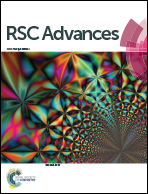Separation of toxic heavy metals from its aqueous solution using environmentally benign vegetable oil as liquid membrane
Abstract
This paper presents an experimental investigation of simultaneous extraction and recovery of harmful heavy metals from the industrial wastewater through Bulk Liquid Membrane (BLM) based technology. The selective extraction and stripping are achieved through the transportation of two such heavy metals viz., lead and cadmium. The environmentally benign coconut oil is selected as solvent of the Liquid Membrane (LM) through two phase equilibrium studies. Same studies are performed to optimize various physico-chemical parameters, such as pH of feed phase, concentrations of feed and strip phases, temperature, speed of stirring of feed phase, run time (duration of extraction), concentration of carrier etc., on the extraction of cadmium. The performance of LM is enhanced with respect to run time by the use of a suitable extracting agent i.e. carrier. Three phase transportation studies are thereby conducted through BLM at the same optimized operating parameters obtained in two phase studies. The extraction and recovery are found to be 72% and 64%, respectively. Further experimentations through BLM were conducted for transportation of lead with the same set of operating parameters. Both the extraction (82%) and recovery (77%) are found comparatively higher for lead as opposed to that of cadmium.


 Please wait while we load your content...
Please wait while we load your content...